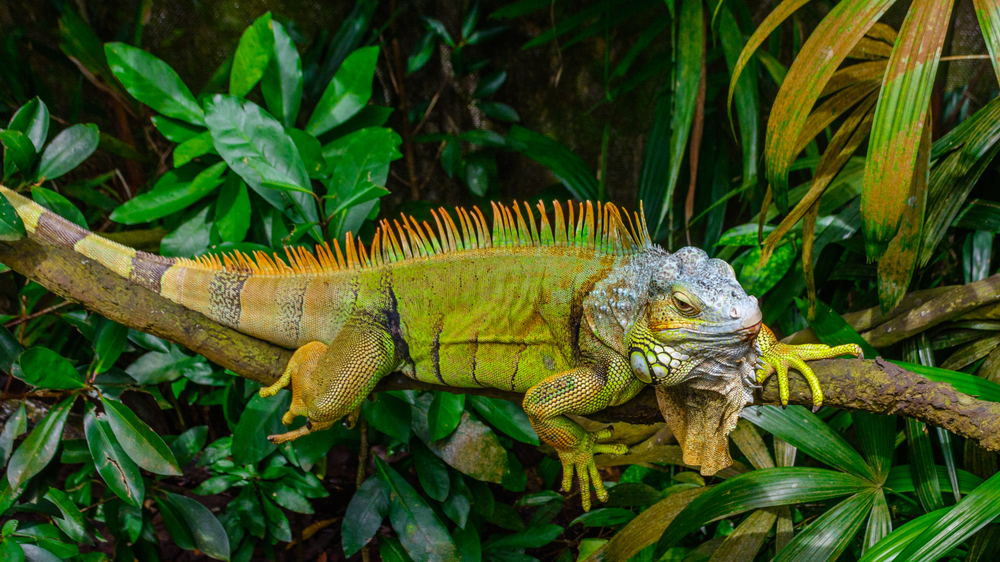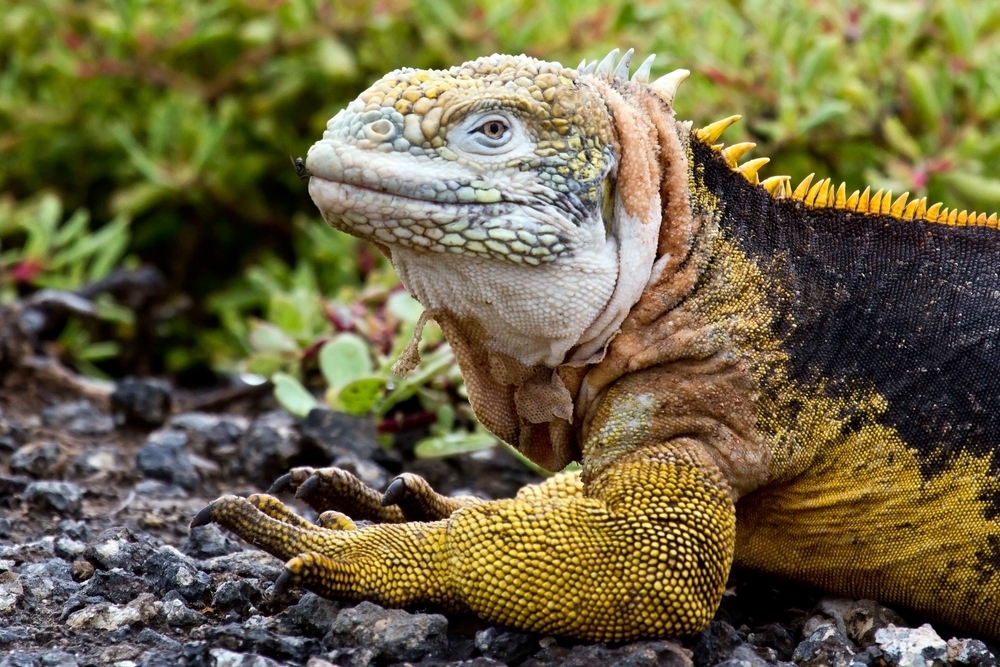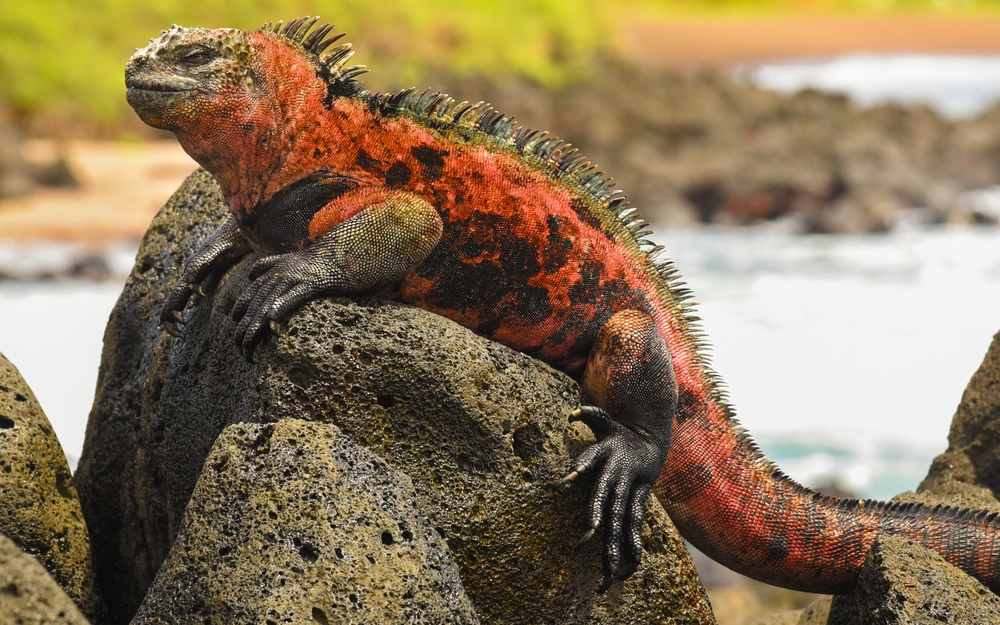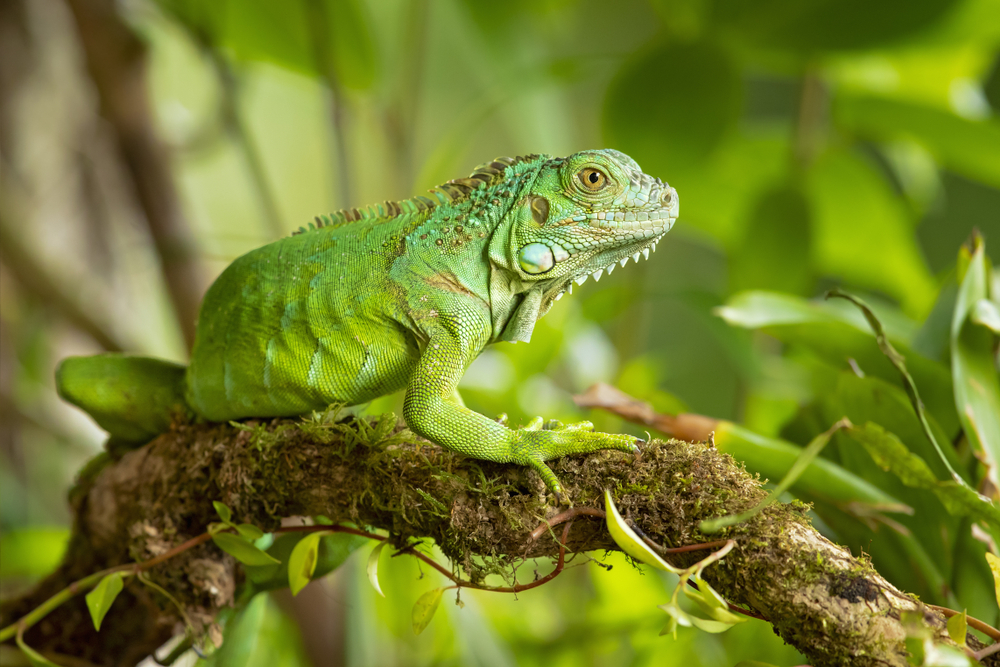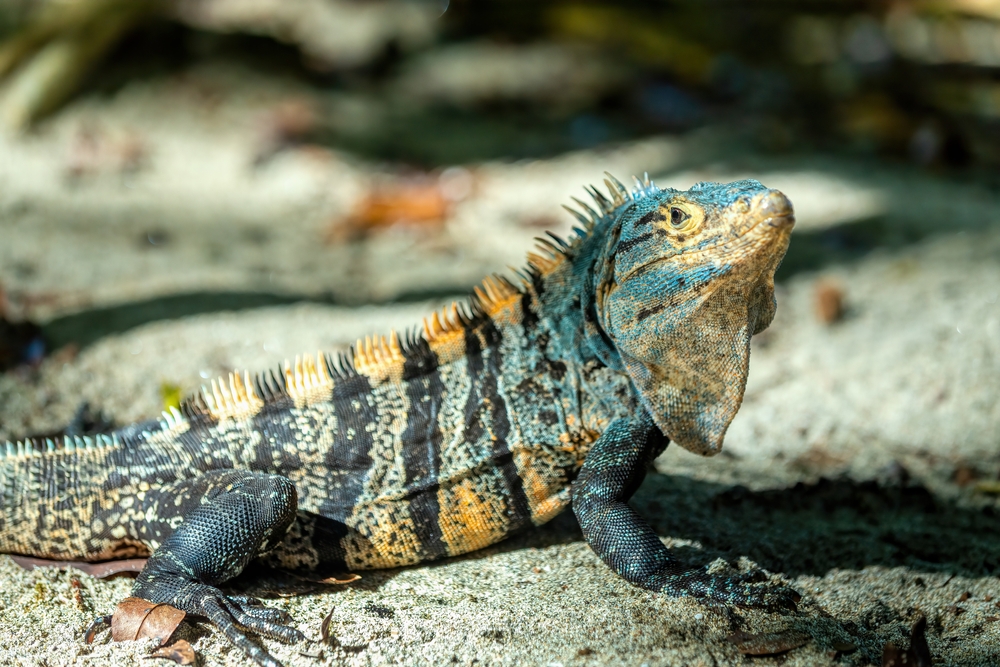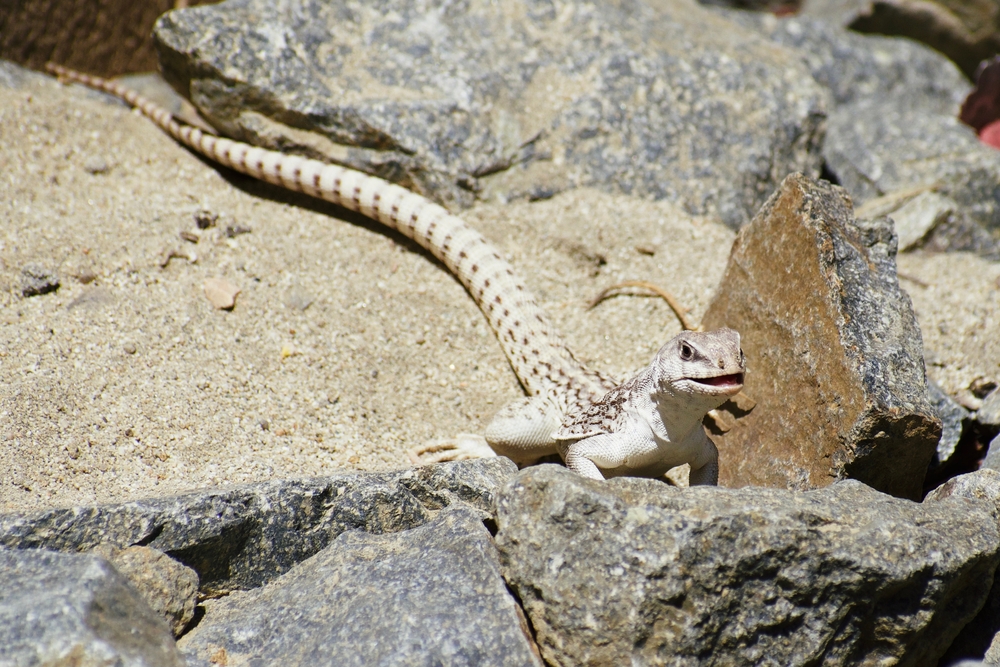Uniqueness
The Green Iguana is one of the most widely recognized reptiles in the world, celebrated for its prehistoric appearance, tree-dwelling lifestyle, and cultural significance. Its size, adaptability, and ecological role make it unique among lizards in both wild and urban landscapes.
Tree-Dwelling Giant:
Few lizards rival the Green Iguana in size and agility—reaching up to 6.5 ft (2 m) in length while remaining fully arboreal. Their ability to leap from trees into rivers, often from heights of 40–50 ft (12–15 m), makes them both graceful and fearless climbers.
Swimming and Escaping Abilities:
Although tree-based, Green Iguanas are strong swimmers and may use submersion as an escape tactic, holding their breath for over 30 minutes. Their long, muscular tails help propel them through rivers and mangrove lagoons.
Thermal Basking and Color Change:
Green Iguanas are masters of thermoregulation. They use sunbathing and color shifts (from dark to light greens or browns) to regulate body temperature. Males may turn bright orange during breeding season to signal dominance and mating readiness.
Subtympanic Shield and Dewlap Displays:
Unique among iguanas, Green Iguanas display a large round subtympanic scale (cheek patch) and a broad dewlap that they extend to communicate territory, alertness, or reproductive status—both to rivals and potential mates.
Pet Trade Icon and Invasive Success:
Once a staple of the exotic pet trade, Green Iguanas have been released or escaped into wild populations throughout Florida, the Caribbean, and parts of Southeast Asia. Their ability to thrive in urban areas, reproduce rapidly, and tolerate a variety of climates has made them both admired and problematic.
Cultural Symbol and Ecological Role:
In Central American cultures, iguanas are known as “gallina de palo” (chicken of the tree) and have been a traditional food source. Ecologically, they act as seed dispersers and folivores, impacting forest regeneration and plant dynamics.
The Green Iguana’s blend of bold coloration, arboreal grace, resilience, and symbolic presence makes it one of the most iconic and ecologically important reptiles of the tropics—and one of the few lizards with global recognition and influence.



































































